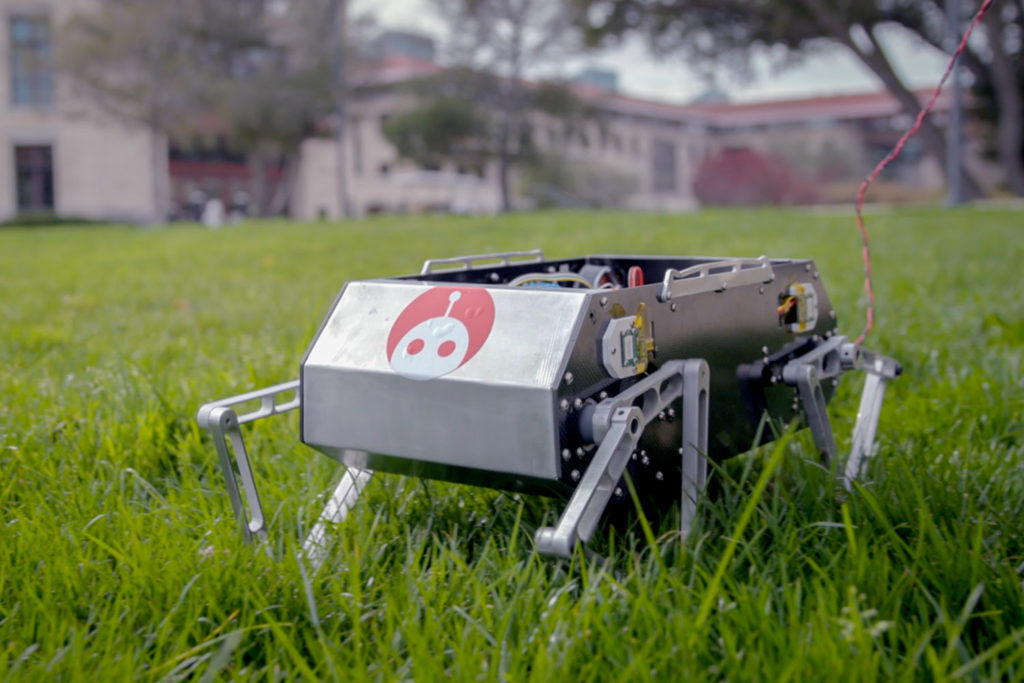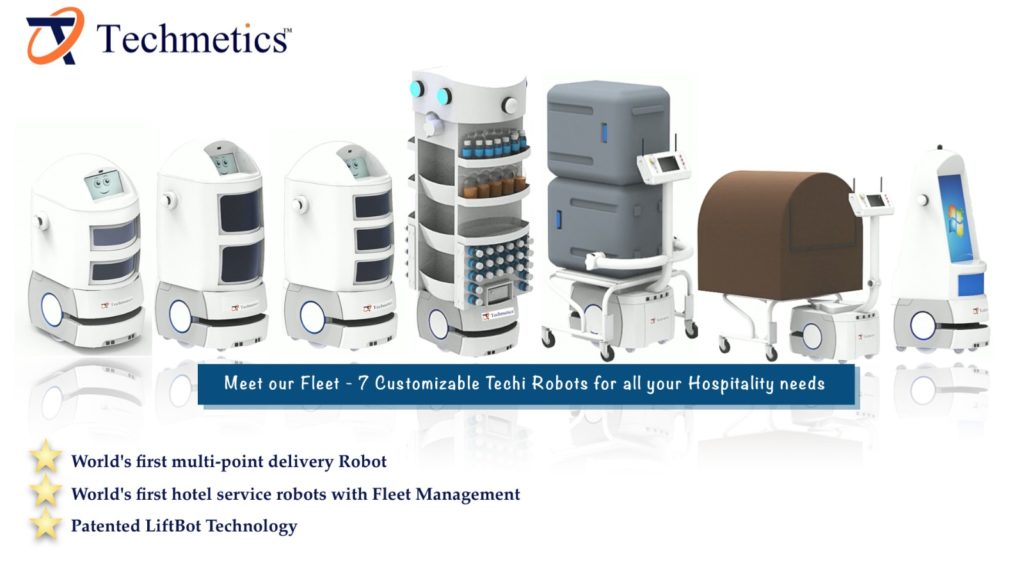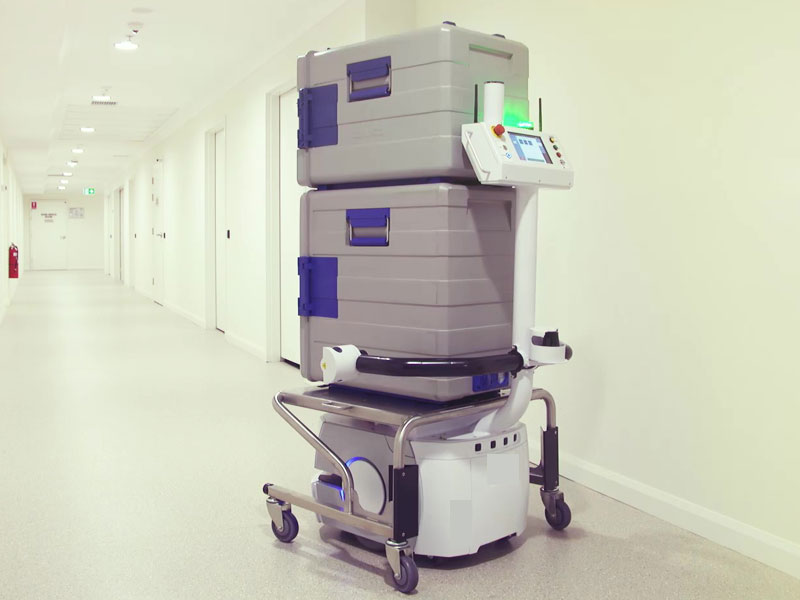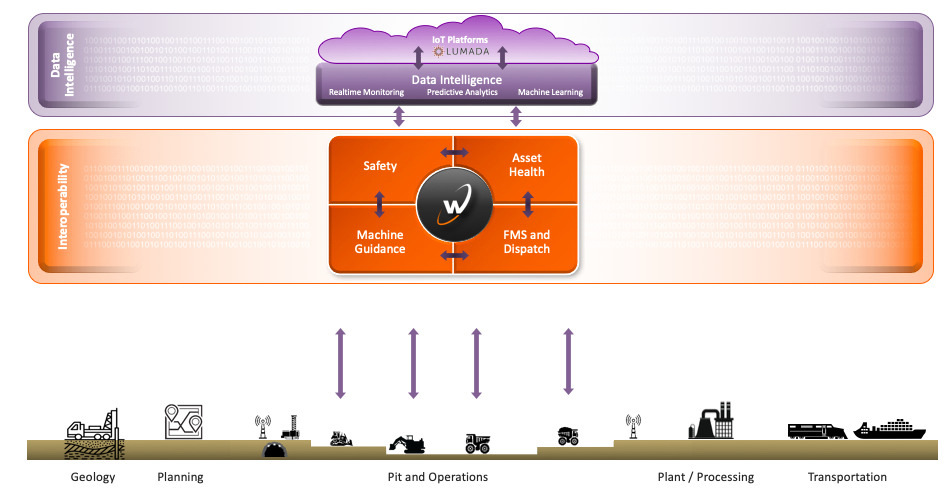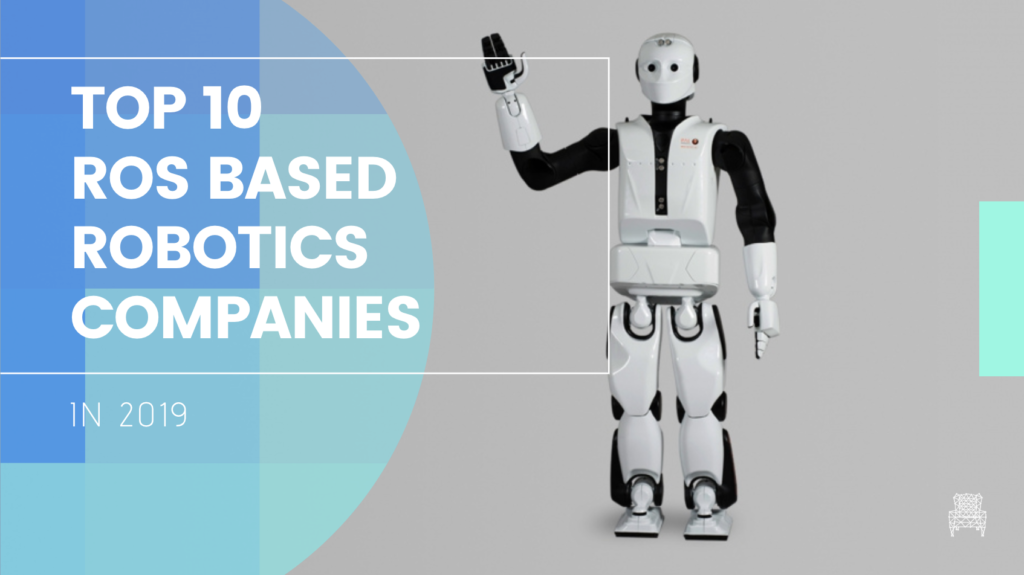
Source: Ricardo Tellez
The Robot Operating System is becoming the standard in robotics, not only for robotics research, but also for robotics companies that build and sell robots. In this article, I offer a list of the top 10 robotics companies worldwide that base their robotics products on ROS.
Criteria
This is the list of criteria I followed to select the winners:
- We are talking about robotics companies that build robots. This is not about companies that produce some kind of software based in ROS, but companies that create and ship robots based in ROS. We do not consider companies that do consulting and generate solutions for a third party, either.
- They have created the robots themselves. This means they are not resellers or distributors of robots made by somebody else.
- They have their robots natively running ROS. This means, you switch the robot on, and it is running ROS. We are not taking into account robots that support ROS — if you install the packages. We concentrate on robots that run ROS off the shelf. For example, you can run ROS on a UR5 arm robot, but if you buy the UR5 robot, it will not come with ROS support off the shelf. You need to add an extra layer of work. We are not considering those robots.
- You can program the robots. Even if some companies provide ROS-based robots — such as Locus Robotics — they do not provide a way to program them. They provide the robots as a closed solution. We are not considering closed solutions here.
To summarize the criteria: 1. You can buy the robot directly from the company; 2. The robot runs ROS from Minute 1; and 3. You can program the robot at will.
Once the companies were selected based on the previous criteria, I had to decide the order. Order was based on my personal perception of the impact those companies are making in the ROS world. That is very subjective to my own experience, I know, but that is what it is. Whenever I felt it necessary, I described my motivation behind the position of the company on the list.
Now, having clarified all that, let’s go to the list!
Top 10 ROS companies
1. Clearpath Robotics
Clearpath is a Canadian company founded in 2009. The number of robots that it produces in the fields of unmanned ground vehicles, unmanned surface vehicles (on the water), and industrial vehicles is amazing. The company’s robots are based on ROS and can be programmed with ROS from Minute 1. That is why these robots are used in the creation of third-party applications for mining, survey, inspection, agriculture, and material handling.
Some of Clearpath’s best-known robots include Jackal UGV, which you can learn how to program. Others include the Husky UGV, Heron USV, and its recently launched series of Otto robots for industrial environments.
As a matter of trustability, this company took the responsibility to provide the customer support to the existing PR2 robots, once Willow Garage closed its doors. Because of that, and because it is the company with the most varied ROS robots available, I put it in the well-deserved No. 1 spot on this list.
I interviewed Ryan Gariepy, CTO of Clearpath, for the ROS Developers podcast. You can listen to the interview here.
2. Fetch Robotics
Fetch Robotics was founded by Melonee Wise in 2014, after she was forced to close her previous pioneer company, Unbounded Robotics. We can say that Fetch has two lines of business. First is its line of mobile manipulators, which are mainly used for robotics research.
Then, Fetch has a line of industrial robots which it sells in fleets ready to be deployed in a warehouse to help with the transport of materials. As I understand it, the first line of business is the only one that allows direct ROS programming, and the second one is a closed product.
I did not select Fetch for No. 2 because of its research line only. I selected it for this spot because Fetch was a pioneer in the creation of affordable mobile manipulators with its Fetch robot (paired with the Freight mobile platform). Up to the moment it released Fetch, there was no ROS-based mobile manipulator on the market. (Sorry, Turtlebot 2 with a Dynamixel arm doesn’t count as a mobile manipulator.)
Recently, Fetch organized the FetchIt! challenge at ICRA 2019. (My company, The Construct, was a partner contributing to the event’s simulation.) At that event, participants had to program their Fetch to produce some pieces in a manufacturing room. You can check the results here.
Even if Fetch Robotics only produces two robots meeting the criteria above, it was the pioneer that opened the field of ROS-based mobile manipulators. That is why it deserves the No. 2 spot on this list.
I interviewed Melonee Wise, CEO of Fetch Robotics, for the ROS Developers podcast. You can listen to the interview here.
3. Pal Robotics
Pal Robotics is based in Barcelona and was created in 2004. I especially love Pal because I worked there for more than seven years, and many of my friends are there. But love is not the reason I put them in the third position.
Pal Robotics earned No. 3 because it’s the only company in the world that builds and sells human-size humanoid robots. And not just a single type of humanoid, but three different types! The Reem robot, Reem-C robot, and recently, the TALOS robot.
Pal also produces mobile manipulators similar to the Fetch ones. They are called Tiago, and you can buy them for your research or applications on top. (If you’re interested, you can learn how to program Tiago robots with ROS in an online course that The Construct created in collaboration with Pal Robotics.)
We have recently released a simulation of TALOS, including its walking controllers. You can get it here.
I interviewed Luca Marchionni, CTO of Pal Robotics, for the ROS Developers podcast. You can listen to the interview here. Also, you can learn what is catkin_make and how to use it.
In addition, I interviewed Victor Lopez, main DevOps engineer of Pal Robotics, for the ROS Developers podcast. You can listen to that interview here.
4. Robotnik
Robotnik is another Spanish company, based in Castellon and founded in 2002. I call it “the Spanish Clearpath.” Really, it has built as many ROS robots as the first company on this list. Robotnik creates and designs mobile manipulators, unmanned ground vehicles of different types, and many types of mobile robots for industrial applications and logistics.
The company is also expert in personalizing your robot by integrating third-party robotics parts into a final ROS-based robot that meets your requirements.
Finally, Robotnik’s team includes the people behind the ROS Components online shop, where you can buy components for your robots that are certified to be ROS supported off the shelf. For all this extensive activity in selling ROS robots, Robotnik deserves the fourth position on this list.
A couple of months ago, Robotnik sent us one of its Summit XL robots for experimenting and creating ROS training materials. We used it extensively for our ROS Live Classes, showing how to program Robotinik robots using a cloud robotics platform.
We also created a specific course to train people to program their Summit XL robot.
I interviewed Roberto Martinez, CEO of Robotnik, for the ROS Developers podcast. You can listen to the interview here.
5. Yujin Robots
Yujin is a Korean company specializing in vacuum cleaning robots. However, those robots are not the reason they are on this list, since they do not run ROS onboard. Instead, Yujin is here because it’s the official seller of the Kobuki robot, that is, the base system of the Turtlebot 2 robot.
The Turtlebot 2 is the most famous ROS robot in the world, even more so than the PR2! Almost every one of us has learned with that robot, either in simulation or in reality. Due to its low cost, it allows you to easily enter into the ROS world.
If you have bought a Turtlebot 2 robot, it is very likely that the base was made by Yujin. We used Kobuki as the base of our robot Barista, and I use several of them at my ROS class at La Salle University.
Additionally, Yujin has developed another ROS robot for logistics that is called GoCart, a very interesting robot for logistics inside buildings (but not warehouses). The robot can be used to send packages from one location in the building to another — including elevators on the path.
6. Robotis
This is another Korean company that is making it big in the ROS world. Even if Robotis is well known for its Dynamixel servos, it’s best known in the ROS world because of its Turtlebot 3 robot and Open manipulator, both presented as the next generation of the Turtlebot series.
With the development of the Turtlebot 3, Robotis brought the Turtlebot concept to another level, allowing people easier entry into ROS. The manipulator is also very well integrated with the Turtlebot 3, so you can have a complete mobile manipulator for a few hundred dollars.
Even easier, the company has made all the designs of both robots open-source, so you can build the robots yourself. Here are the designs of Turtlebot 3. Here are the designs of Open Manipulator.
7. Shadow Robot
Shadow Robot is based in London. This company is a pioneer in the development of humanoid robotic hands. To my knowledge, Shadow Robot is the only company in the world that sells that kind of robotic hand.
Furthermore, its hands are ROS-programmable off the shelf. Apart from hands, Shadow Robot also produces many other types of grippers, which can be mounted on robotic arms to create complete grasping solutions.
One of its solutions combined with third-party robots was the Smart Grasping System released in 2016. It compbined a three-fingered gripper with a UR5 robot. Hhere is a simulation we created of the Smart Grasping System, in collaboration with Ugo Cupcic.
Shadow Robot’s products include the Shadow Hand, the Cyberglobe, and the Tactile telerobot.
Demonstrating its leadership in the field, Shadow Robot’s hands were selected by the OpenAI company to do their reinforcement learning experiments with robots that need to learn dexterity.
8. Husarion
Husarion is a Polish company founded in 2013. It sells simple and compact autonomous mobile robots called ROSbots. They are small, four-wheeled robots equipped with a lidar, camera, and a point cloud device. These robots are perfect for learning ROS with a real robot, or for doing research and learning with a more compact robot than the Turtlebot 2.
Husarion also produces the Panther robot, which is more oriented to outdoor environments, but with the same purpose of research and learning.
What makes Husarion different from other companies selling ROS robots is the compactness of its robots and its creation of the Husarnet network, which connects the robots through the cloud and has remote control over them.
I interviewed Dominik Novak, CEO of Husarion for the ROS Developers podcast. You can listen to the interview here.
9. Neobotix
Neobotix is a manufacturer of mobile robots and robot systems in general. It provides robots and manipulators for a wide range of industrial applications, especially in the sector of transporting material.
Neobotix is a spin-off of the Fraunhofer Institute in Stuttgart, and it created the famous Care-O-Bot, used many times in the Robocup@Home competitions. However, as far as I know, the Care-O-Bot never reached the point of product, even if you can order five of them and get them delivered, running immediately after unpacking.
At present, Neobotix is focusing on selling mobile bases, which can be customized with robotics arms, converting the whole system in a custom mobile manipulator.
The company also sells the mobile bases and the manipulators separately. Examples of mobile bases include Neobotix’s MP series of robots. On the mobile manipulator side, it sells the MM series. All of them work off-the-shelf with ROS.
Even if Neobotix’s products are full products on their own, I see them more as components that we can use for building more complex robots, allowing us to save time creating all the parts. That is why I have decided to put it in the ninth position and not above the other products.
10. Gaitech
Gaitech is a Chinese company that is mainly dedicated to distributing ROS robots, and ROS products in general, in China. from third-party companies. They include many of the companies on this list, including Fetch, Pal, and Robotnik.
However, Gaitech has also developed its own line of robots. For example, the Gapter drone is the only drone I’m aware of that works with ROS off the shelf.
Even if Gaitech’s robots are not very popular in the ROS circuit, I have included them it because at present, it’s the only company in the world that is building ROS–based drones. (Erle Robotics did ROS-based drones in the past, but as far as I know, that ceased when it switched to Acutronic Robotics.) Due to this lack of competition, I think Gaitech deserves the No. 10 position.
I interviewed May Zheng, VP of Marketing of Gaitech, for the ROS Developers podcast. You can listen to the interview here.
Honorable mentions
The following is a shortlist of other companies building ROS robots that did not make it onto the list for certain reasons. They may be here next year!
1. Sony
Sony is a complete newcomer to the world of ROS robots, but it has entered through the big door. Last year, it announced the release of the Aibo robot dog, which fully works on ROS. That was a big surprise to all of us, especially since Sony abandoned the Aibo project back in 2005.
Sony’s revived robot dog could have put it on the list above, except for the fact that the robot is still too new and can only be bought in the U.S. and Japan. Furthermore, the robot still has a very limited programming SDK, so you can barely program it.
If you are interested in the inner workings of Aibo with ROS, have a look at the presentation by Tomoya Fujita, one of the engineers of the project, during the ROS Developers Conference 2019, where he explained the communication mechanism between processes that they had to develop for ROS in order to reduce battery consumption in Aibo. Amazing stuff, fully compatible with ROS nodes and using the standard communication protocol!
2. Ubiquity Robotics
This is a company based on selling simple mobile bases based on ROS for the development of third-party solutions, or as it calls them, “robot applications.” Ubiquity Robotics’ goal is to provide a solid mobile base with off-the-shelf navigation on top of which you can build other solutions like telepresence, robotic waiters, and so on.
Ubiquity Robotics is a young company with a good idea in mind, but it’s very close to existing solutions like Neobotix or Robotnik. Let’s see next year how they have evolved.
I interviewed David Crawley, CEO of Ubiquity, for the ROS Developers podcast. You can listen to the interview here.
3. Acutronic Robotics
This company started building ROS-based drones, but recently, they changed direction to produce hardware ROS microchips. Acutronic produces the MARA robot, an industrial arm based on ROS2 on the H-ROS microchips.
However, as far as I know, the MARA robot is not Acutronics’ main business, since the company created it and sells it as an example of what can be done with H-ROS. That is why I decided not to include this company in the main top 10 list.
By the way, we also collaborated with Acutronic to create a series of videos about how to learn ROS2 using their MARA robot.
I interviewed Victor Mayoral, CEO of Acutronic, for the ROS Developers podcast. You can listen to the interview here.
ROS conclusions
Most of the ROS-based robotics companies are based on wheeled robots. A few exceptions are the humanoid robots of Pal Robotics, the drones of Gaitech, the robotic hands from Shadow Robots, and the robot arms from Neobotix.
It’s very interesting that we see almost no drones and no robotic arms running ROS off the shelf, since both of them are very basic types of robots. There are many robotic arm companies that provide ROS drivers for their robots and many packages for their control, like Universal Robots or Kinova.
But of the listed companies, only Neobotix actually provides an off-the-shelf arm robot with its MM series. I think there is a lot of market space for new ROS-based drones and robotic arms. Take note of that, entrepreneurs of the world!
Finally, I would like to acknowledge that I do not know all the ROS companies out there. Even if I have done my research to create this article, I may have missed some companies worth mentioning. Let me know if you know of or have a company that sells ROS robots and should be on this list, so I can update it and correct any mistakes.
![]()
About the author
Ricardo Tellez is co-founder and CEO of The Construct. Prior to this role, he was a postdoctoral researcher at the Robotics Institute of the Spanish Research Council. Tellez worked for more than seven years at Pal Robotics developing humanoid robots, including its navigation system and reasoning engine. He holds a Ph.D. in artificial intelligence and aims to create robots that really understand what they are doing. Tellez spoke at the 2019 Robotics Summit & Expo in Boston.
The post Top 10 ROS-based robotics companies in 2019 appeared first on The Robot Report.
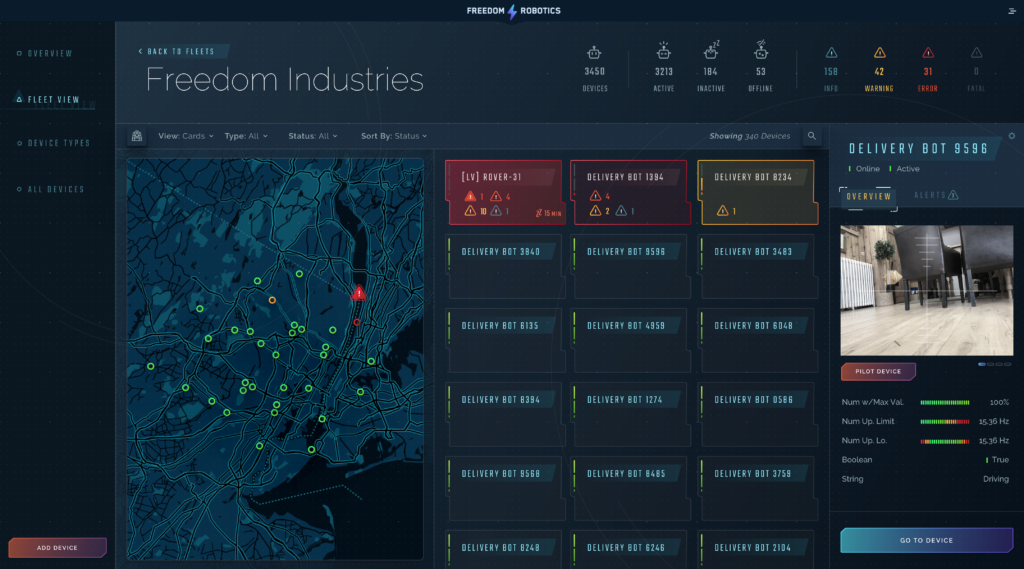
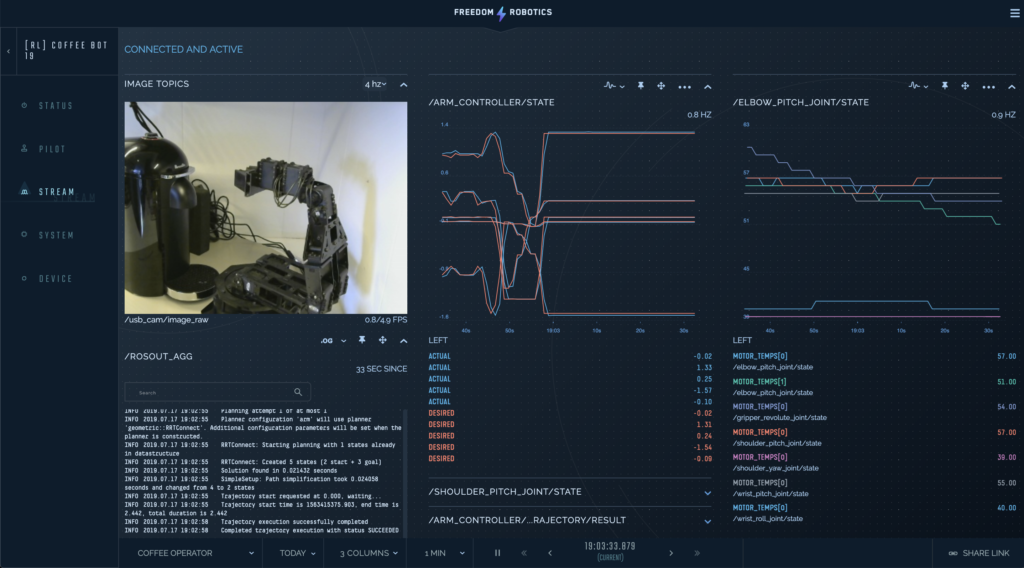



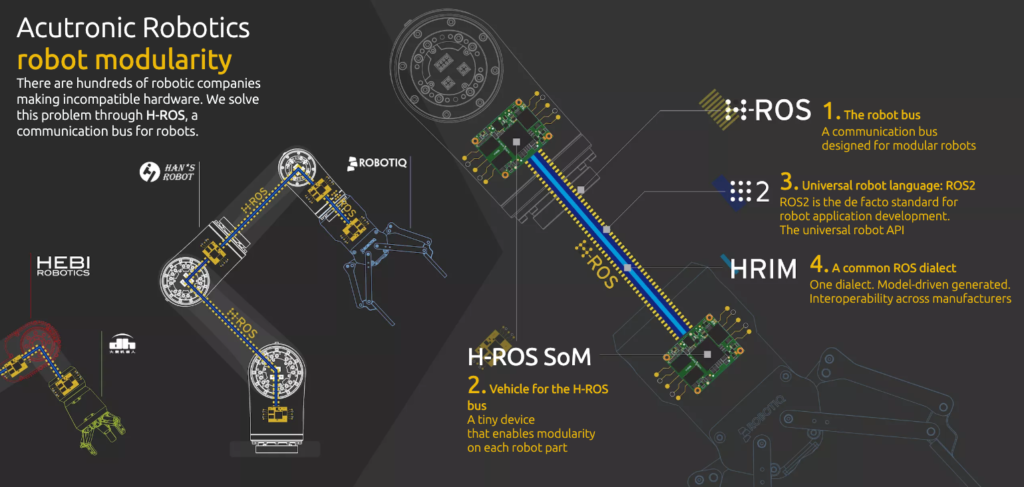
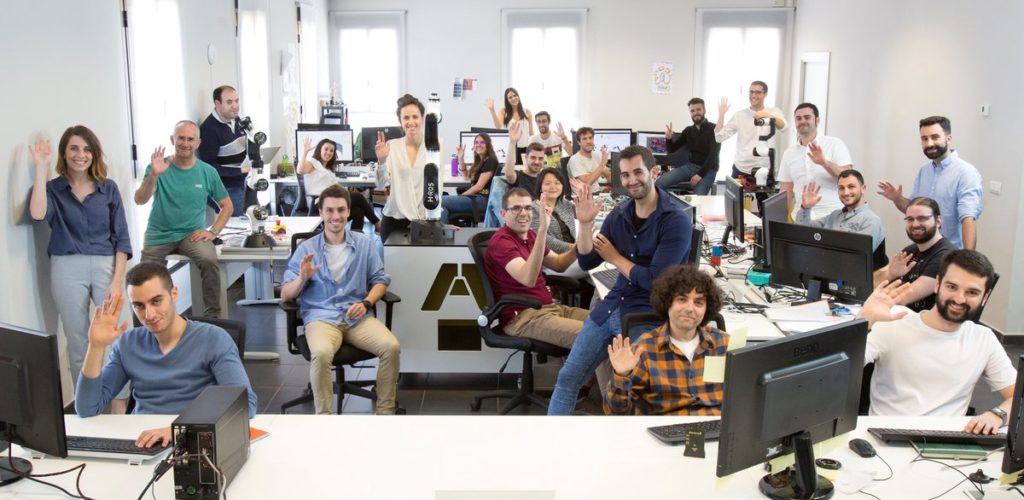
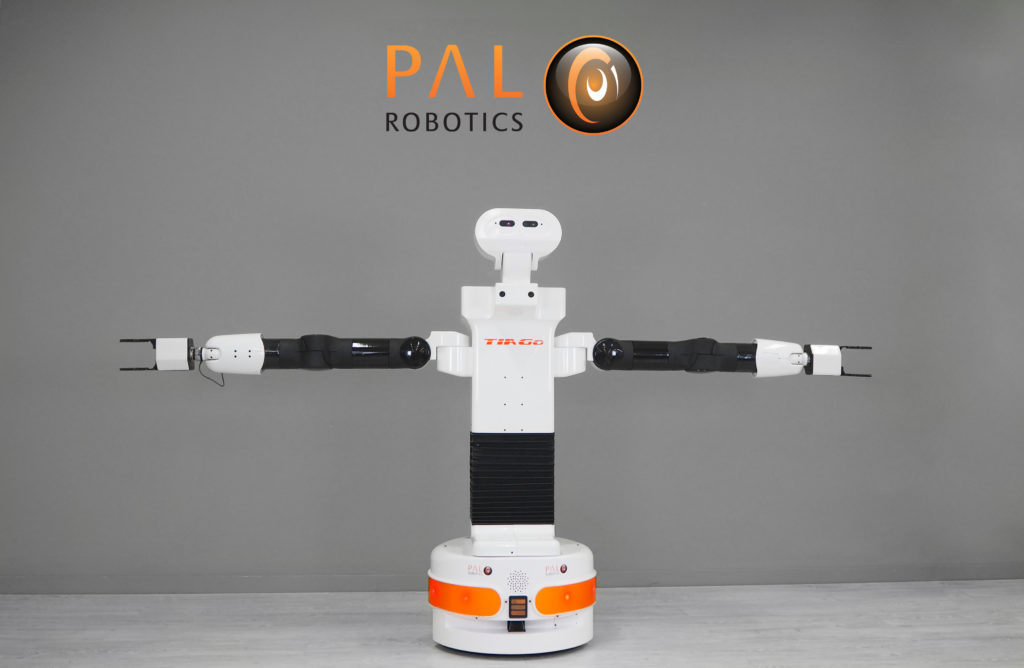
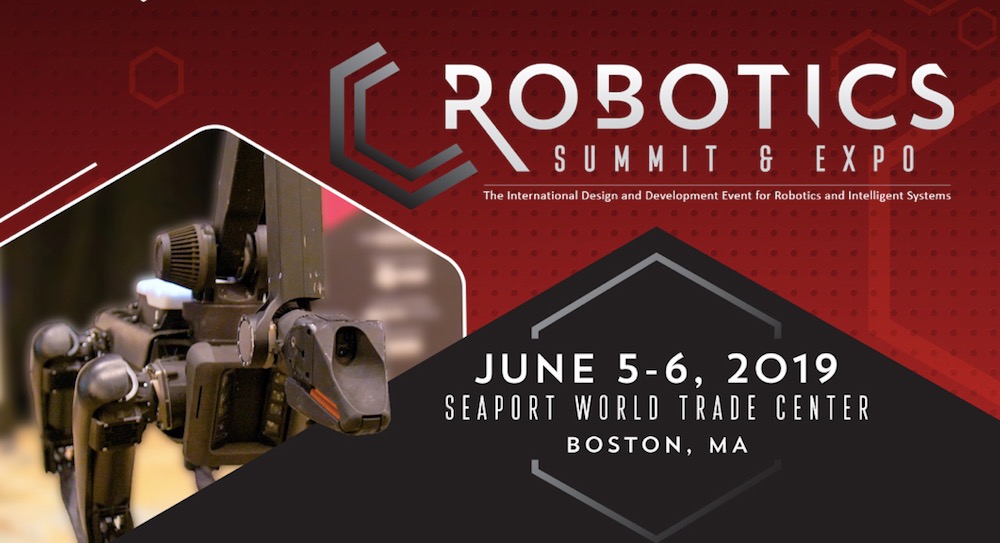 Keynotes
Keynotes